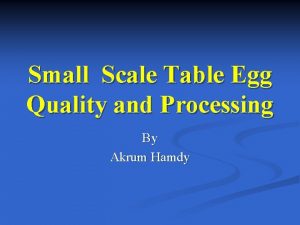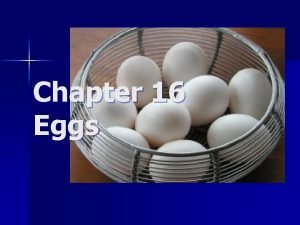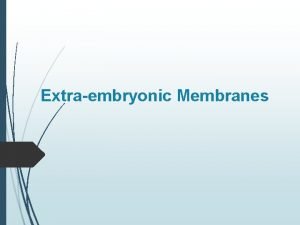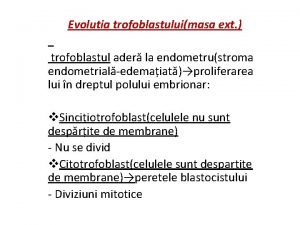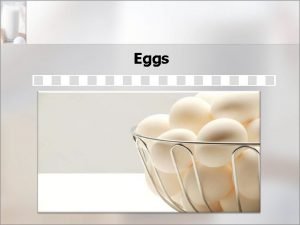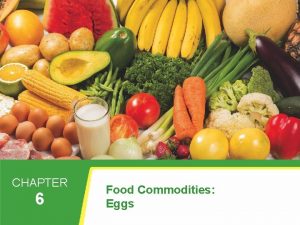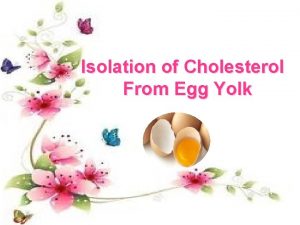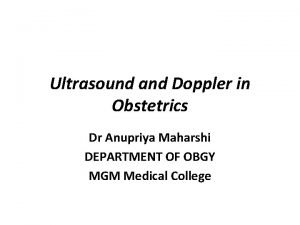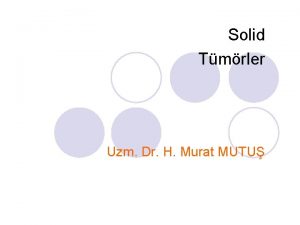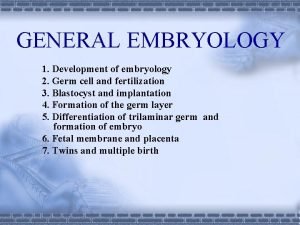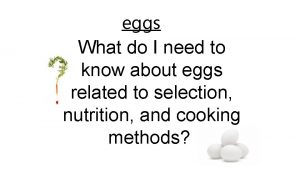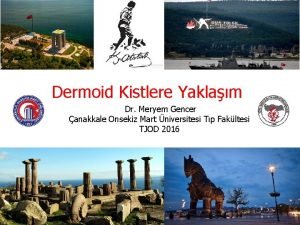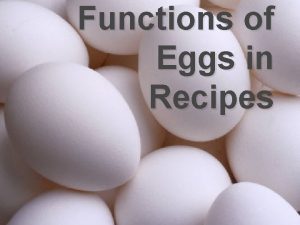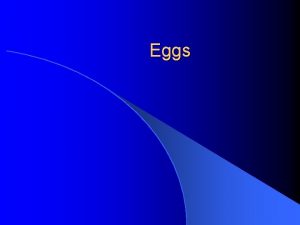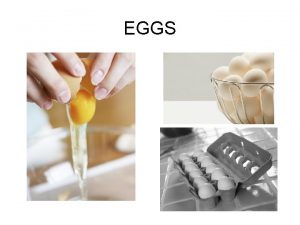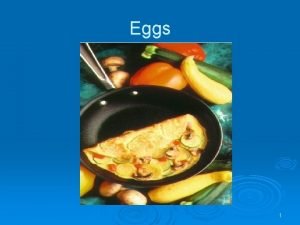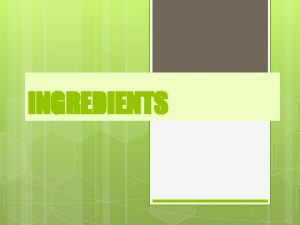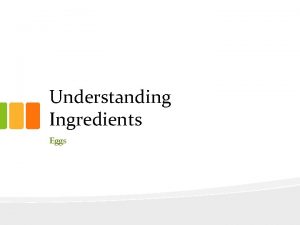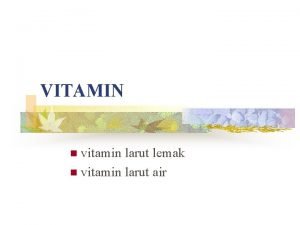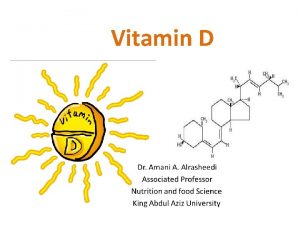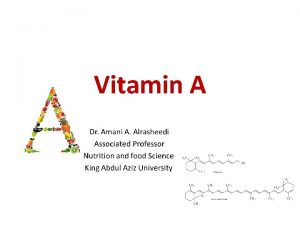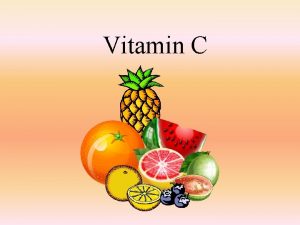Eggs Structure Nutrients Yolk Vitamin A Vitamin D
















- Slides: 16

Eggs

Structure

Nutrients: • Yolk: • Vitamin A • Vitamin D • B Vitamins • Carbohydrate • Complete Protein • Iron • Phosphorous • Small amount of Calcium • Fat

Nutrients • Albumin: • Water • Riboflavin • Protein • 80 calories per egg

Buying Eggs • Buying Eggs: • Grade AA eggs • Grade A • Grade B

Grading Eggs • Grade is determined by inner and outer qualities at the time it is packaged: • • • Size of albumin Small air cell Candling

Size of Eggs • • Minimum weight per dozen Most recipes based on large sized eggs • • • Jumbo Extra Large Medium Small – Price of eggs depends on the size of eggs

Egg Storage • Highly perishable • Refrigerate promptly • Store wide end up original carton • Don’t wash eggs

How Food Science Applies to Eggs • • Coagulation: Protein in eggs unwinds when exposed to heat The protein thickens The egg thickens and changes from liquid to semi or solid state

Properties of Eggs • Coagulation: • Allows eggs to bind ingredients together (meatloaf) (baking) • Allows eggs to thicken mixtures (custards)

Properties of Eggs • Emulsifier: • Hold together two liquids that normally won’t stay mixed • Protein in yolk allows this to happen

Properties of Eggs • Foams: • Foam forms when beating egg whites • Protein molecules break down and the foam gains strength • Foam guidelines: For ease in separating eggs they should be cold when separated Foam forms best when egg whites are allowed to sit at room temperature for about 30 minutes

Separating Eggs • Beating Egg Whites: • No trace of yolk • No trace of any fat • Separate best when cold • No plastic bowls • Produce greatest volume at room temperature • Stabilizer (acidic ingredient) often added • Cream of tartar • Vinegar • Lemon juice

Cooking Eggs • • • Cooked in the shell Poached Eggs Fried Eggs Scrambled Eggs Baked Eggs (Shirred Eggs) Omelet Microwave Custard Meringue

Egg Safety • Eggs should be cooked until the whites and yolks are firm or, for dishes containing eggs, until an internal temperature of 160 degrees Fahrenheit is reached because Salmonella is destroyed by the heat of cooking. Clean your hands, as well as the surfaces and utensils that come into contact with raw eggs – an important step for avoiding cross-contamination. • Separate eggs from other foods in your grocery cart, grocery bags and in the refrigerator to prevent crosscontamination. • Keep eggs in the main section of the refrigerator at a temperature between 33 and 40 degrees Fahrenheit – eggs accidentally left at room temperature should be discarded after two hours, or one hour in warm weather. •

 Shell cleanliness shell soundness shell texture shell shape
Shell cleanliness shell soundness shell texture shell shape What happens when a double yolk egg hatches
What happens when a double yolk egg hatches Chapter 17 eggs selecting and storing eggs
Chapter 17 eggs selecting and storing eggs A yolk and cream mixture that is used to thicken liquids
A yolk and cream mixture that is used to thicken liquids Extraembryonic membranes
Extraembryonic membranes Sacul yolk
Sacul yolk Composition of eggs
Composition of eggs Commodity eggs
Commodity eggs Isolation of cholesterol from egg yolk principle
Isolation of cholesterol from egg yolk principle What is fetal pole
What is fetal pole Wilms tümörü nöroblastom ayrımı
Wilms tümörü nöroblastom ayrımı What is the yolk sac in humans
What is the yolk sac in humans Amniotic cavity and yolk sac
Amniotic cavity and yolk sac Part of an egg
Part of an egg Magnof
Magnof Binding agent egg
Binding agent egg 7 categories of nutrients
7 categories of nutrients
